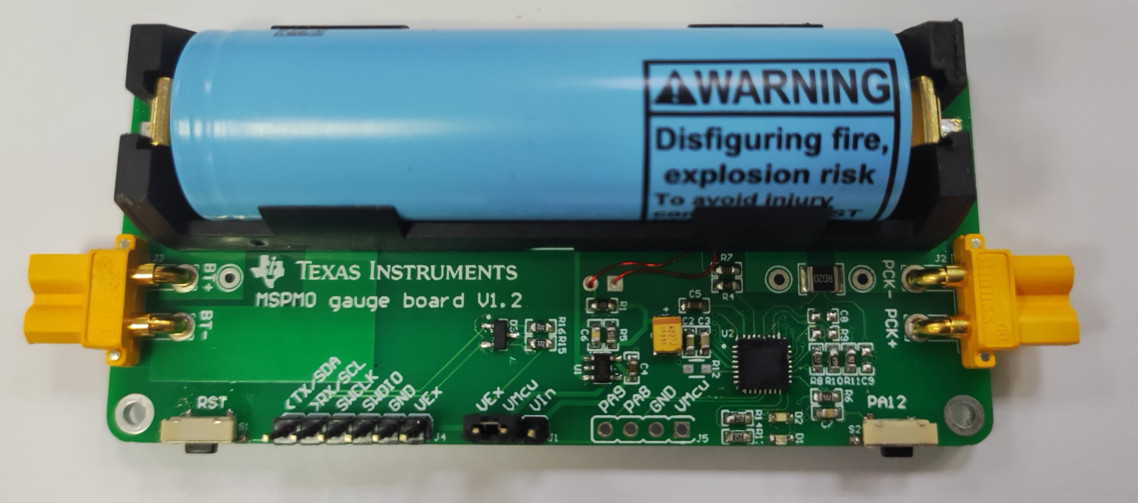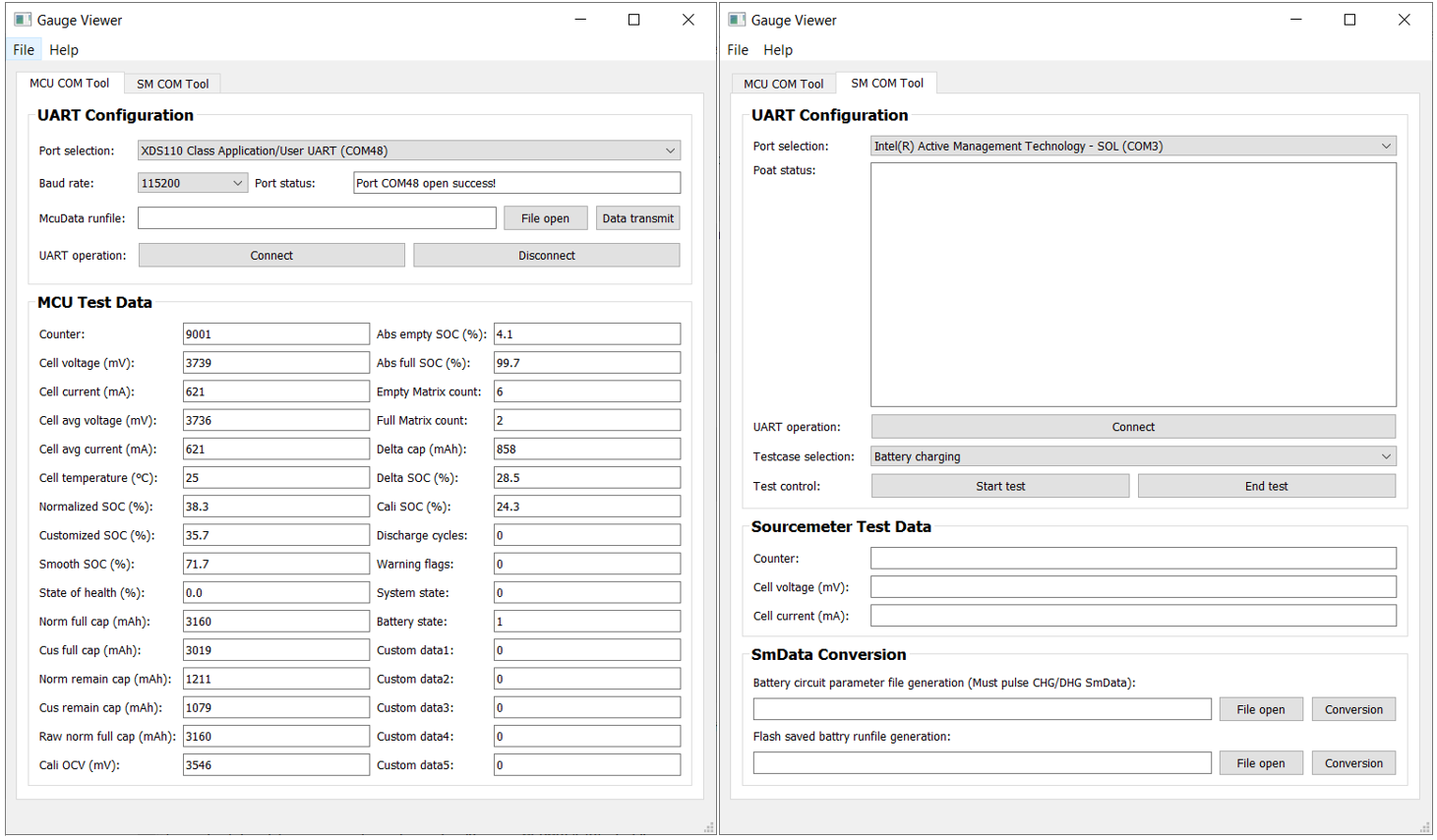-
MSPM0 Gauge L1 Solution Guide SLAAEE3A July 2023 – June 2024 MSPM0C1106 , MSPM0C1106 , MSPM0L1306 , MSPM0L1306
MSPM0 Gauge L1 Solution Guide
Abstract
This application note is created to build a description about the level1 gauge solution based on MSPM0L130x series. It only detects the voltage to calculate the system-on-chip (SoC) directly. Solution features, hardware introduction, GUI introduction, software introduction, and evaluation follow are included in it.
Project collateral discussed in this application note can be downloaded from the following URL: https://www.ti.com/lit/zip/slaaee3.
Trademarks
Python® is a registered trademark of Python Software Foundation.
Microsoft® and Excel® are registered trademarks of Microsoft Corporation.
Keithley® is a registered trademark of Tektronix Inc.
All trademarks are the property of their respective owners.
1 Introduction
There are different Gauge solutions based on MSPM0. Table 1-1 shows the quick compare between them for customers to choose the suitable one. This document focuses on introducing MSPM0 Gauge L1 solution.
| MSPM0 Gauge L1 | MSPM0 Gauge L2 | |
|---|---|---|
| Detected parameters | Voltage; Temperature | Voltage; Temperature; Current |
| Output key parameters | SOC | S0C; SOH; Remain capacity; Cycles |
| Used methods | Volt Gauge | Coulomb counting + Volt Gauge + Empty/Full compensation + Capacity learn |
| Suitable application | Output step data with low SOC accuracy | Output percentage data with high SOC accuracy |
Suitable battery type |
LiCO2/LiMn2O4 |
LiCO2/LiMn2O4/LiFePO4 |
The features of the level1 gauge solution based on MSPM0 are as shown:
- Work after MCU power-on without factory calibration or learning cycles.
- Support SOC (State of charge) and warning flag output.
- Low requirement for battery chemistry parameters input.
- Total solution takes about 6K flash and 1.6K SRAM.
- Current consumption without UART communication (NO_OUTPUT mode) is about 3 µA.
The solution is combined of three parts. All of them can be found at MSPM0 Gauge L1 Development package.
- The hardware board is used to evaluate the
total solution with MSPM0L130x integrated.
 Figure 1-1 MSPM0 Gauge Hardware Board
Figure 1-1 MSPM0 Gauge Hardware Board - The software
project based on MSPM0L130x, including the used gauge algorithm.
 Figure 1-2 MSPM0 Gauge Software Project
Figure 1-2 MSPM0 Gauge Software Project - The GUI is written with Python®, which can be used to communicate with the gauge board, run test pattern by
controlling a source meter and generate battery parameters.
 Figure 1-3 MSPM0 Gauge GUI Project
Figure 1-3 MSPM0 Gauge GUI Project